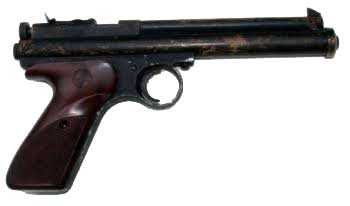Crosman 116 CO2 pistol
by B.B. Pelletier Today, we have a guest blogger. Paul Hudson has done other guest blogs for us; and true to form, he’s been very thorough. This blog is about the Crosman 116, which is a great vintage gun that’s the father of the Crosman 150. I’d say this is the ultimate test, as he … Read more
